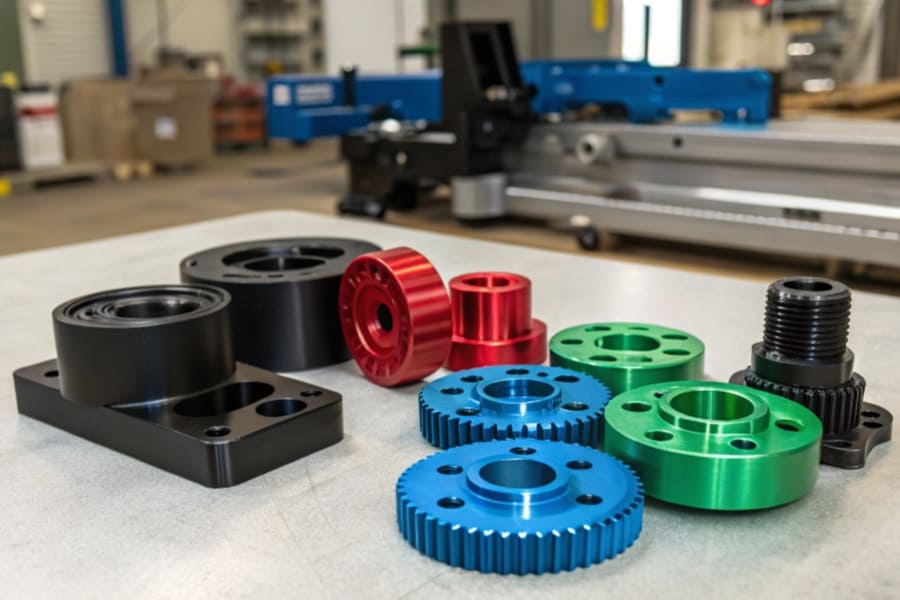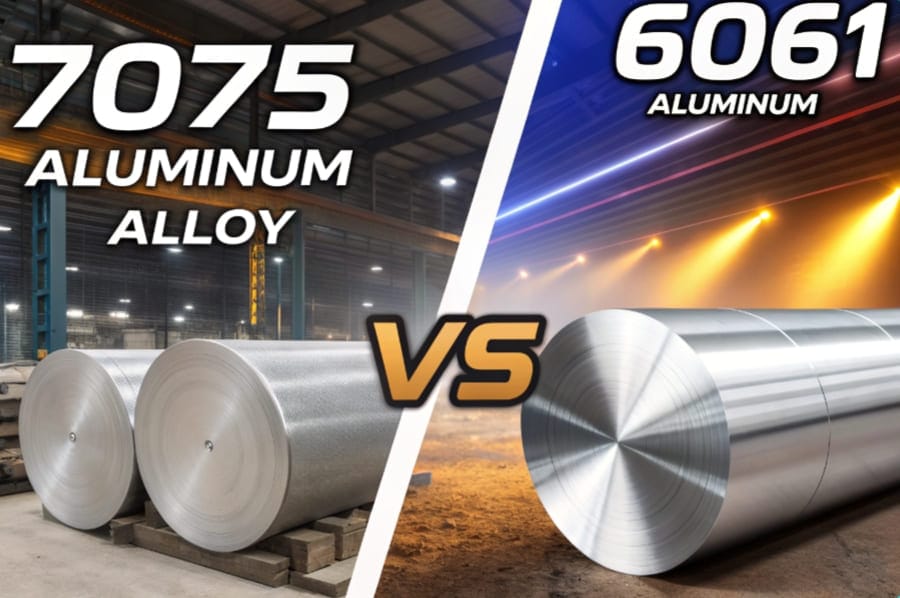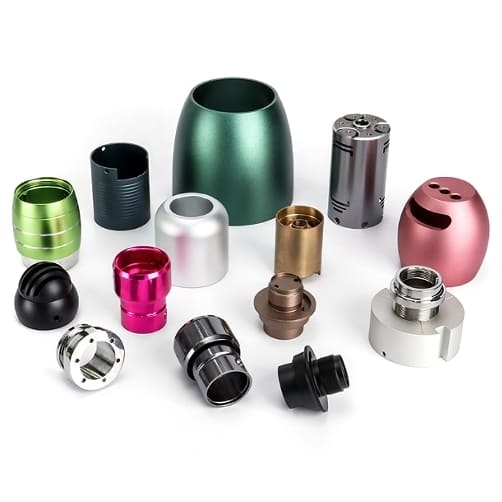When I first started working with CNC machining1, choosing the right material was one of the toughest decisions I had to make. Eventually, I settled on aluminum, and it turned out to be the best choice. Its high strength, light weight, and excellent corrosion resistance make it an ideal material for a wide range of projects. The more I learned about it, the more I realized just how versatile aluminum is in the machining world. Let me walk you through why aluminum is such a popular choice for CNC machining.
Aluminum is chosen for CNC machining because of its high Strength-to-weight ratio2, corrosion resistance, and ease of machining, making it ideal for a wide range of applications.

Choosing the right material for CNC machining is crucial to any project’s success. Aluminum stands out due to its versatility, but with so many different grades available, it can be difficult to know where to start. Let’s dive into why aluminum is often the go-to material for CNC machining and explore the best options for your specific needs.
What is the standard aluminum for machining?
When it comes to CNC machining, the term "standard aluminum" can refer to several different grades. The most commonly used in machining are 6061 and 7075, both of which offer a great balance of strength, durability, and Machinability3.
The standard aluminum used in machining is typically 6061, known for its balance of strength, corrosion resistance, and machinability.

6061 aluminum is widely used because it’s easy to machine and still maintains good strength and Structural integrity4. However, if your project requires a different set of properties, you might want to consider other grades, such as 7075, which offers higher strength at the cost of some machinability.
In addition to 6061, 7075 is often chosen for aerospace, military, and other high-strength applications. It is stronger than 6061 but is more difficult to machine, which may increase costs and machining time. Therefore, the choice between 6061 and 7075 depends on your project’s strength requirements and budget considerations. Furthermore, there are also specialized alloys in these grades for enhanced properties like increased fatigue resistance, making it essential to consider your specific application carefully.
What are the three grades of aluminum?
Aluminum comes in a variety of grades, each designed to meet specific machining needs. The three most common series are the 1000 series, 2000 series, and 6000 series. Each of these has its own set of advantages and applications.
The three main aluminum grades are 1000, 2000, and 6000 series, with the 6000 series (like 6061) being the most commonly used in CNC machining.

The 1000 series is made almost entirely of aluminum and is prized for its excellent corrosion resistance, though it lacks strength. The 2000 series contains copper and is known for its strength, making it suitable for aerospace and military uses. The 6000 series, especially 6061, offers a perfect balance of strength and machinability, which is why it’s often the go-to choice for many industries.
| Aluminum Series | Composition | Strength | Common Applications |
|---|---|---|---|
| 1000 Series | Almost pure aluminum | Low strength | Chemical equipment, food processing, electrical conductors |
| 2000 Series | Aluminum with copper | High strength | Aerospace, military, high-stress applications |
| 6000 Series | Aluminum with magnesium and silicon | Balanced strength, machinability | Construction, automotive, general engineering |
Which aluminum grade is best for machining?
Selecting the right aluminum grade for machining depends on the specific requirements of your project. Whether you need high strength, corrosion resistance, or easy machinability, different grades will perform better for different tasks.
6061 aluminum is generally considered the best for machining due to its excellent machinability, strength, and versatility.

Over the years, I’ve worked with several grades of aluminum, and 6061 always stands out. It’s easy to machine and provides a good combination of strength, durability, and cost-effectiveness. Whether you’re building structural parts or small machine components, 6061 is usually the go-to choice.
6061 offers excellent workability, making it ideal for complex shapes and intricate parts. Moreover, its Thermal properties5 ensure it can be used in high-temperature applications without significant deformation. For industries like aerospace and automotive, 6061 provides the necessary strength and formability at an affordable price.
What is the best aluminum for CNC?
When it comes to CNC machining, choosing the right aluminum alloy is crucial. Some grades are better suited for high-strength applications, while others excel in machinability or corrosion resistance.
The best aluminum for CNC machining depends on your project, but 6061 and 7075 are the most popular due to their balance of strength, machinability, and corrosion resistance.

In my experience, 6061 and 7075 are the two grades that most people in the industry gravitate toward. 6061 is great for most applications because of its machinability and versatility. On the other hand, 7075 is stronger, but it’s a bit tougher to machine, which can add to the cost and time needed for production.
The decision on which aluminum alloy to use depends largely on the specific requirements of the application. For high-precision parts with complex geometries, 6061 is often the most reliable option. However, if you’re working on aerospace or military projects where strength is paramount, 7075 may be the better choice.
What is the CNC tolerance for aluminum?
One of the key aspects of CNC machining1 is the tolerance, which refers to the acceptable variation in dimensions. The tighter the tolerance, the more precise the final part. But how does aluminum perform in terms of CNC tolerance?
CNC machining for aluminum typically offers tolerances of ±0.005 inches (0.13mm) to ±0.0005 inches(0.01mm) , depending on the part’s complexity and size.
With the right CNC equipment, achieving tight tolerances with aluminum is very possible. For most parts, CNC machines can achieve tolerances of ±0.005 inches, but for more demanding projects, I’ve seen tolerance levels as tight as ±0.002 inches. The ability to work with such fine tolerances makes aluminum a great choice for precise, high-performance applications.
This level of precision is essential in industries like aerospace, medical devices, and automotive engineering, where even the smallest deviation from specifications can lead to performance issues or safety concerns.
What is the advantage of aluminium 6061?
Aluminum 6061 is often referred to as the "workhorse" of CNC machining. But why is it so widely used, and what advantages does it offer over other materials?
The advantage of aluminum 6061 lies in its excellent balance of strength, corrosion resistance, and ease of machining, making it the go-to alloy for many CNC projects.

Having worked with 6061 on countless projects, I can say that it truly offers the best of all worlds. It’s strong enough for structural parts, corrosion-resistant for outdoor use, and easy to machine into precise shapes. Whether you’re making automotive components or aerospace parts, 6061 is often the most reliable choice.
The versatility of 6061 also makes it suitable for Anodizing6, a surface treatment that enhances its resistance to wear and corrosion. This makes it an even more attractive option for products that will be exposed to harsh environments, such as marine applications or outdoor structures.
Does 6061 aluminum machine well?
One of the main reasons 6061 is so popular in CNC machining is because of its ease of machinability. But does it really live up to the hype?
Yes, 6061 aluminum machines very well, offering smooth finishes and high precision with minimal wear on cutting tools.

I’ve used 6061 for a variety of projects, and I can attest to how well it machines. It’s relatively soft compared to other alloys, which means it’s easy on cutting tools and produces smooth finishes with little effort. This makes it a cost-effective choice for businesses looking to optimize their machining process.
Additionally, the alloy’s uniformity in composition and structure ensures consistent results, further reducing the chances of defects or errors during machining. It’s one of the reasons why 6061 is widely used in industries like electronics, medical devices, and sporting equipment.
What is the difference between aluminum 6061 and 6082?
When you’re choosing between aluminum 6061 and 6082, it’s important to know their differences. While both are excellent materials, they serve different purposes.
The main difference between 6061 and 6082 is that 6082 has higher strength and is better suited for structural applications, while 6061 offers better machinability.
6082 is stronger than 6061, making it a better option for heavy-duty, load-bearing applications like structural supports or bridges. However, 6061 is easier to machine, making it the go-to choice for parts that require precision but don’t need the same level of strength as 6082.
Moreover, while 6082 is resistant to corrosion, it does not exhibit the same level of machinability or versatility in terms of forming and processing as 6061. For industries requiring more robust structural integrity, 6082 is the superior choice.
What is the difference between 1100 and 5052 aluminum?
Choosing between 1100 and 5052 aluminum depends on the specific needs of your project. While both are excellent materials, they differ significantly in their properties.
1100 aluminum is more malleable and corrosion-resistant, while 5052 aluminum is stronger and more suitable for high-stress environments.

1100 aluminum is typically used in situations where corrosion resistance and Malleability7 are the main concerns, such as in cooking utensils or tanks. On the other hand, 5052 aluminum is often used for applications that need more strength and durability, such as marine environments and heavy-duty industrial uses.
The increased strength of 5052 makes it suitable for applications where parts are subject to Mechanical stress8 or frequent exposure to harsh chemicals. For example, it is commonly used in the manufacturing of fuel tanks, pressure vessels, and marine components.
Which aluminum is stronger 5052 or 6061?
When comparing 5052 and 6061 aluminum, both are strong, but which one is the better choice for high-stress applications?
5052 aluminum is stronger than 6061, making it ideal for applications that require more strength and durability under stress.
5052 aluminum is better suited for applications where high strength is crucial, such as in marine, pressure vessel, or high-stress environments. While 6061 is still a strong alloy, it is generally used in situations that require a balance between strength and machinability rather than pure strength.
In addition, 5052 offers superior resistance to corrosion, particularly in marine environments, which makes it the preferred material for boat hulls, oil rigs, and similar applications exposed to saltwater.
Conclusion
Aluminum offers a wide range of benefits for CNC machining1, including high machinability, excellent strength-to-weight ratio, and corrosion resistance. With the right grade of aluminum, you can achieve the ideal performance for your project, whether it’s for aerospace, automotive, or any other industry.
-
Learn more about CNC machining – This link leads to a comprehensive guide on CNC machining, where you can explore the best practices, materials, and techniques to optimize your projects and achieve top-notch results. ↩ ↩ ↩
-
Strength-to-weight ratio – Understanding the importance of strength-to-weight ratio is essential for selecting the right material for your machining needs. This resource explains the concept and how it affects material choice. ↩
-
Machinability – This article explains what machinability means and why it’s critical to consider when selecting aluminum alloys for CNC machining. ↩
-
Structural integrity and failure – Understanding the factors that contribute to structural integrity helps when selecting the right material for high-strength projects. ↩
-
Thermal properties of materials – This link offers insights into how different materials, including aluminum, perform under temperature stress, crucial for applications requiring heat resistance. ↩
-
Anodizing Aluminum – Anodizing can enhance aluminum’s durability and corrosion resistance, making it ideal for specific applications. ↩
-
Malleability – This article discusses the concept of malleability in metals and how it influences their choice in different manufacturing processes. ↩
-
Mechanical stress – Learn more about mechanical stress and its impact on material selection for applications that involve high force or tension. ↩
